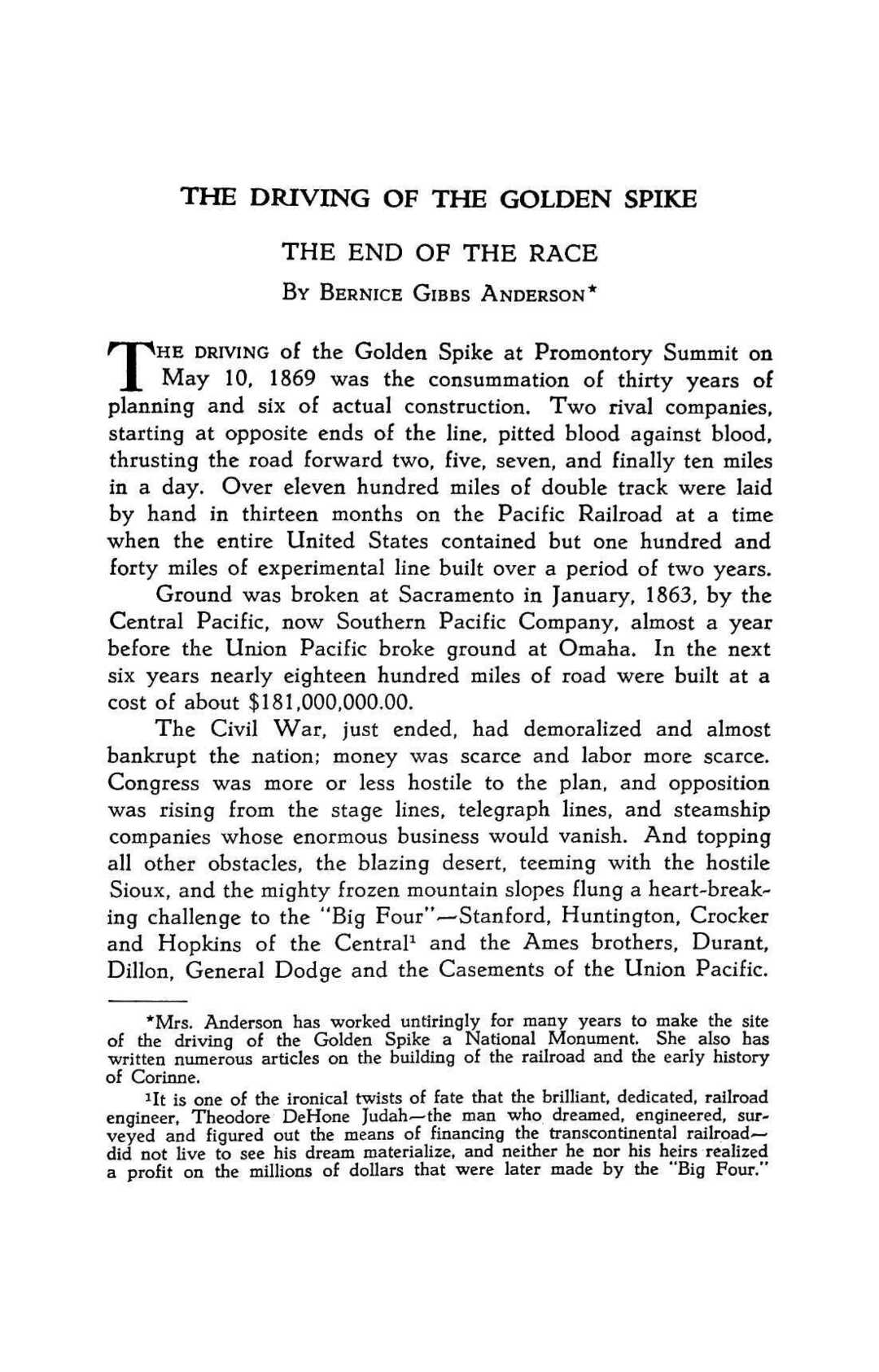H A N D C A R T S T O U T A H , 1856-1860 BY LEROY R.
HAFEN*
HP HIS year, 1956, marks the centennial of what was perhaps the •*• most remarkable travel experiment in the history of Western America. The past hundred years have witnessed an interesting evolution of overland transportation—pack-horse train, ox-drawn wagon, stagecoach, pony express, railroad train, motor car, airplane—each in turn. And interspersed with these more common conveyances have appeared unusual or freakish devices, ranging from wheelbarrow to camel caravan. But only at one period, 1856-60, was the handcart employed for mass migration. The genesis of this unique travel plan is to be seen in the Mormon proselyting system and its marked success. Zion, as a gathering place for the faithful, was proclaimed early, and "gathering to Zion" became a cardinal principle of doctrine. Mormonism, a missionary religion from its inception in 1830, at first confined its proselyting to the United States; but in 1837 ardent missionaries went to England. Here the response was immediate, for the new gospel offered both spiritual and temporal salvation in America. Within eight months, two thousand British converts were baptized. W h e n the Mormons finally established themselves in the Great Basin, the need for more settlers to develop the new country stimulated the proselyting urge. Utah was now proclaimed the "gathering place," and missionaries in Britain preached the necessity for coming to the new Zion. Clamor for emigration became almost unbounded. A large proportion of the converts were from the underprivileged classes, whose means were insufficient to pay for an overseas voyage and a long journey to the far interior of a distant land. To assist these, Brigham Young insti-
*For many years Dr. Hafen has been an outstanding writer and editor of western history. Currently, he is working on the fifteen volume. The Par West and the Rockies Historical Series. 1820-1875, which is being published by the Arthur H. Clark Company. For thirty years he was state historian and director of the Colorado Historical Society. At present he is on the faculty of the Brigham Young University.




















